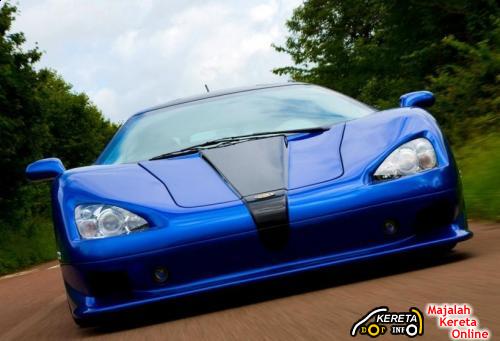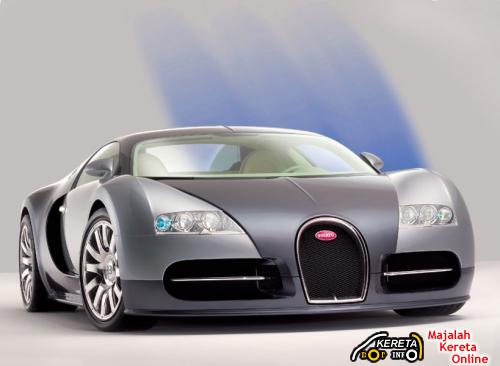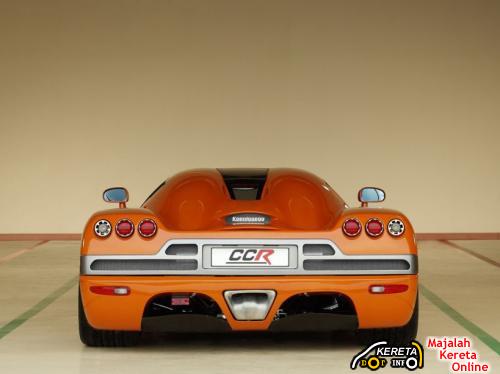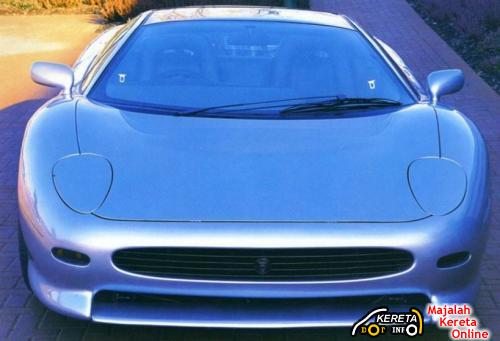Today, we’re going to present you the top 5 fastest production cars of all time and some details regarding their attempts to beat the previous speed record.
1st PLACE – 2007 SSC ULTIMATE AERO (412.28 KMH, 256.18 MPH)
SSC ULTIMATE AERO – FRONT
Shelby Supercars (SSC), manufacturer of the ultra high-performance Ultimate Aero Twin Turbo, set the new “World’s Fastest Production Car” record with an average top speed of 255.83 mph. Confident of the 1183 bhp vehicle’s abilities, SSC set out to validate their top speed claim in accordance with the strict guidelines set by Guinness World Records. Among other requirements, in order to meet Guinness’ approval, a vehicle testing for the top speed record must drive down the course, turn around, and make a second pass in the opposite direction within one hour.
The vehicle’s official “top speed” is calculated by averaging the top speeds of each pass in order to negate any favorable road or weather conditions. In September 2007, on a temporarily-closed 2 lane stretch of public highway in Washington State, the Ultimate Aero posted a top speed of 257.11 mph (413.83 km/h) on its first pass and 254.55 mph (409.71 km/h) on its return pass, yielding a new top speed record: a staggering 255.83 mph (411.76 km/h). The data, collected by Dewetron’s world-renowned GPS tracking system, will be verified by Guinness before the Ultimate Aero is officially crowned the “World’s Fastest Production Car.” This breaks the current official record held by the Koenigsegg CCR at 242 mph by 11.83 mph and the Bugatti Veyron’s unofficial speed of 253 mph by 3.11 mph.
The car is powered by a 6.35-liter engine that produces an outstanding power of 1,183 bhp at 6075 rpm and 1,094 lb-ft of torque at 6150 rpm.
The mid-engine rear-drive car boasts Michelin Pilot Sport PS2 tires, forged 3-piece alloy wheels and large ventilated discs on both the front and the rear.
And beside these impressive figures, the car is indeed a really state-of-the-art vehicle. It comes with all common technologies plus high-end equipment, including air conditioning, power windows, power mirrors, navigation system, 10-speaker premium audio system, 7.5-inch LCD screen and rear-view camera.
SSC ULTIMATE AERO – REAR
Engine
Type: Twin-turbo V8
Displacement cu in (cc): 387 (6342)
Power bhp (kW) at RPM: 1183(883) / 6950
Torque lb-ft (Nm) at RPM: 1094(1484) / 6150
2nd PLACE – 2005 BUGATTI VEYRON (408.47 KMH, 253 MPH)
BUGATTI VEYRON
Built in France, the Bugatti Veyron super sports car achieved a top speed of just over 400 km/h (248.6 miles/h) on the high speed section of the Volkswagen proving grounds at Ehra – Lessien.
The Veyron achieved a top speed of 408.47 km/h (253 mph) on the same Ehra-Lessien testing ground. This is exactly the same place where McLaren F1 established the previous world speed record in 1998.
Although it managed to establish a new record, Bugatti Veyron is more than a world-beating model as it has become one of the most popular cars ever produced, with tens, if not hundreds, of appearances in TV commercials and movies.
The Bugatti Veyron was powered by a 8.0-liter quad-turbocharged W16 engine that produced a maximum power of 1,001 PS (987 hp and 736 kW) and accelerates from 0 to 100 km/h (62 mph) in 2.46 seconds. Moreover, it sprints from 0 to 160 km/h (99 mph) in 5.2 seconds and to 400 km/h (249 mph) in 50 seconds.
Engine
Type: Quad-Turbo W16
Displacement: 7994 cc
Horsepower: 1002 bhp @ 6000 rpm
Torque: 922 lb-ft @ 5500 rpm
3rd PLACE – KOENIGSEGG CCR (387.37 KMH, 240.1 MPH)
KOENIGSEGG CCR – FRONT
McLaren F1’s glory was ended on February 28, 2005 when the Koenigsegg CCR achieved a record top speed of 387.37 km/h (240.1 mph). A standard CCR was driven by Loris Bicocchi on the same Nardo track that witnessed several other record breaking attempts, including the ones belonging to Jaguar XJ220.
The Swedish Koenigsegg supercar is the 3rd most powerful series-produced car today.
Koenigsegg CCR has a very powerful engine thanks to the Swedish Lysholm twin-screw compressor and a new exhaust system made of titanium.
In addition, this incredibly fast car features all kinds of minor yet vital aerodynamic components, such as side air intakes, large front splitters and tweaked rear-end. The vehicle used Michelin Pilot Sport 2 tires, with 255/35–19″ in the front and 335/30–20″ in the rear.
KOENIGSEGG CCR – REAR
Engine
Type: Supercharged V8
Displacement: 4700 cc
Horsepower: 806 bhp @ 6900 rpm
Torque: 678 lb-ft @ 5700 rpm
Transmission: 6-Speed Manual
4th PLACE – 1994 McLAREN F1 (386.7 KMH, 240.1 MPH)
McLAREN F1
McLaren F1 is the world’s first production road car to feature an all carbon composite monocoque and body structure. This unique material combines the low weight necessary for performance with exceptional strength to exceed demanding industry safety requirements.
McLaren F1 surely made history as it is one of the most popular car models across the globe. While we’re not going to talk about the production model of the car, McLaren F1’s record beating attempt was basically divided in two different parts.
The first part, also known as the 1995 attempt, was actually the first time when a street-legal car actually managed to beat the previous record held by Jaguar XJ220. McLaren F1’s top speed was rated at 231 mph (372 km/h), with some people claiming it could do a lot more if the 7500 rpm rev limited restriction was removed.
However, the world’s fastest production car record was set by McLaren F1 on March 31st 1998 when racing driver Andy Wallace drove a standard F1 road car. The result was a maximum speed of 240.1 mph (386.7 km/h), a record that was held for no less than 7 years.
McLAREN F1 – DASHBOARD
Engine
Type: V12
Displacement: 6064 cc
Horsepower: 627 bhp @ 7400 rpm
Torque: 479 lb-ft @ 4000 rpm
5th PLACE – 1993 JAGUAR XJ220 (349.4 KMH, 217 MPH)
JAGUAR XJ220
Back in 1992, Martin Brundle, the famous British former Formula One driver, attempted to beat the record held at that time by the 1992 Bugatti EB110 SS. He indeed managed to break the world record by driving an XJ220 with 212.3 mph (341.7 km/h) on the Nardo Ring circuit but there’s a quite interesting story behind his attempt.
The catalytic converters installed on Jaguar XJ220 were limiting the overall output of the car and obviously represented a major disadvantage for people who aimed to beat the world record. However, by removing the catalytic converters, they managed to increase the rev limiter from 7200 rpm to 7900 rpm and thus, they improved the maximum speed.
On a second attempt to drive the Jaguar with even a higher speed using the aforementioned modifications, Brundle pushed the car to no less than 217.1 mph (349.4 km /h), a new world record which was held by the XJ220 for almost two years.
Engine
Type: Twin-Turbo V6
Displacement: 3494 cc
Horsepower: 542 bhp @ 7200 rpm
Torque: 475 lb-ft @ 4500 rpm
Transmission: 5-Speed Manual










Jom komen!